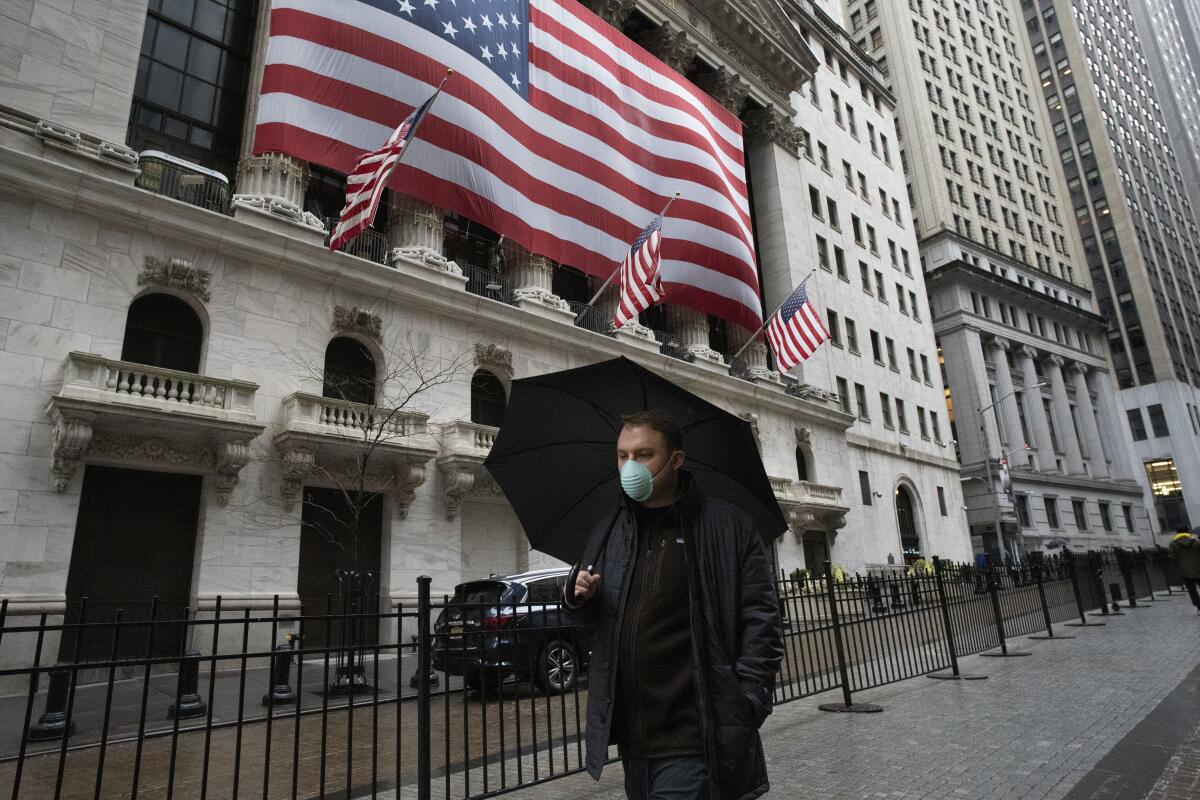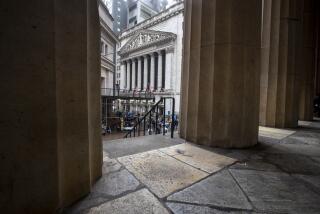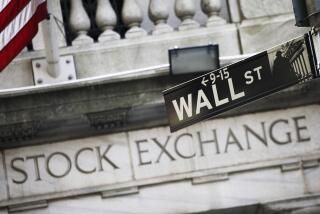U.S. stocks climb 6% the day after biggest loss since 1987

Stocks rallied Tuesday as President Trump promised he’s “going big” with plans to prop up the staggering economy through the coronavirus outbreak.
Besides the White House’s proposal, which could approach $1 trillion, the Federal Reserve also announced its latest emergency move to get markets running more smoothly. The Standard & Poor’s 500 index climbed 6%, clawing back nearly half of its huge loss from the day before.
Even a 5% move used to be extremely rare, but it’s become the norm this month as investors see a recession as increasingly likely, if not already here. Many professional investors expect the market’s big swings in both directions to continue until health experts get the new coronavirus in check.
“Government tends to show up late to the party with a bazooka,” said Barry Bannister, head of institutional equity strategy at Stifel. “It’s a bit of an overreaction, but that’s to be understood as normal for policymakers.”
Trump wants the government to send checks to Americans in the next two weeks to help support them while chunks of the economy come closer to shutting down, Treasury Secretary Steven T. Mnuchin said Tuesday.
Mnuchin briefed Senate Republicans on the proposal, which could also include $50 billion for the airline industry and $250 billion for small businesses. The travel industry has been among the industries hardest hit by the outbreak. Planes are sitting grounded, and hotels and casinos are shutting their doors.
Investors have been waiting for the federal government to offer more aid for the economy. After flipping between gains and losses Tuesday morning, stocks turned decisively higher after the Federal Reserve revived a program first used in the 2008 financial crisis to help companies get access to cash for very short-term needs.
“There are still a lot of questions in the mind of the market as to what will be enough,” said Robert Haworth, senior investment strategist at U.S. Bank Wealth Management. “It’s a start, but there’s still a lot to be determined.”
Ultimately, investors say they need to see the number of infections slow before markets can find a bottom. Worldwide cases now exceed 190,000. In the San Francisco Bay Area, nearly 7 million people were all but confined to their homes in the nation’s most sweeping lockdown.
For most people, the coronavirus causes only mild or moderate symptoms, such as fever and cough, and those with mild illness recover in about two weeks. But severe illness, including pneumonia, can occur, especially in the elderly and people with existing health problems, and recovery could take six weeks in such cases. Some people die.
Uncertainty about how badly the virus will hurt the economy has put the market on a roller coaster with steep losses giving way to sharp gains, only to get wiped out again, sometimes all in the same day.
“I don’t think we’re going to be able to trust movements in the market for some time,” said Tom Martin, senior portfolio manager with Globalt Investments.
Trading was unsettled around the world. European stocks swung from gains to losses and back to gains. South Korean stocks fell to their fifth straight loss of 2.5%, but Japanese stocks shook off an early loss to edge higher.
The Dow Jones industrial average seesawed through the day. It ended with a gain of 1,048.86 points, or 5.2%, at 21,237.38. The day before, it sank nearly 3,000 points after Trump said a recession may be on the way.
The S&P 500, which dictates the movements of workers’ 401(k) accounts much more than the Dow does, is still 25.3% below the record high it reached last month. It’s close to where it was at the start of 2019, before one of the best years for stocks in decades.
Stocks have had a few rebounds since the market began selling off in mid-February on worries that COVID-19, the disease caused by the coronavirus, will slam the economy and corporate profits. But all have ended up short-lived. The S&P 500 has had four days in the last few weeks during which it surged more than 4% — something that did not happen at all last year. Each time, it has slumped more than 2.8% the following day.
The virus has spread so quickly that its effects haven’t shown up in much U.S. economic data yet. A report on Monday about manufacturing in New York state was the first piece of evidence that manufacturing is shrinking because of the outbreak. On Tuesday, a report showed that retail sales weakened in February, when economists had been expecting a gain.
“The global recession is here and now,” S&P Global economists wrote in a report Tuesday.
They say initial data from China suggest that country’s economy was hit harder than expected, though it has begun to stabilize. “Europe and the U.S. are following a similar path,” the economists wrote.
More to Read
Inside the business of entertainment
The Wide Shot brings you news, analysis and insights on everything from streaming wars to production — and what it all means for the future.
You may occasionally receive promotional content from the Los Angeles Times.










